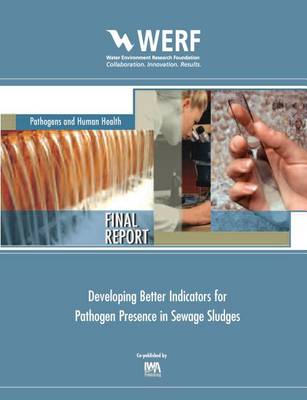Available as an eBook only.
Today, more than eight million tons of biosolids are generated annually for land application nationwide. These biosolids contain beneficial plant nutrients, soil conditioners, and may also contain pathogenic bacteria, viruses, protozoa and parasites. The fate of pathogens is a concern for biosolids generators, applicators, and the general public. The ability to detect the presence of microbial pathogens and the resulting health risks in biosolids is a significant issue confronting the wastewater industry. Ideally, wastewater treatment plants should be able to monitor for specific pathogens in biosolids. Since it is almost impossible to detect and quantify the presence of all possible pathogens in waste matrices, there is a compelling need to identify a suite of indicators that can be used to predict the presence of pathogenic microorganisms in biosolids. The overall objective of this project was to identify those pathogens and surrogate indicator organisms that are at the highest density in raw sludge and determine their time-temperature-pH relationships in the laboratory under controlled conditions.
There were surprisingly low numbers of culturable enteric viruses (median values shown) ( 1 PFU/g), Salmonella spp ( 8 MPN/g), and helminth ova ( 1 ova/g) in the untreated sewage samples. Other pathogens, such as Shigella spp (25 MPN/g), Legionella spp (108 CFU/g), Aeromonas spp (108 CFU/g), MacConkey sorbitol-negative E.coli populations (104 MPN/g) were, however, present in larger numbers. When molecular PCR-based methods were used, the presence of gene sequences indicative of pathogens such as Adenovirus (107 gene copies/g), Giardia spp (105 gene copies/g) was evident. Other organisms such as aerobic spores (106 CFU/g), Cl. perfringens spores (106 CFU/g), fecal coliforms (108 MPN/g), E.coli (106 MPN/g), Enterococci (106 MPN/g), somatic coliphages (105 PFU/g) and male-specific coliphages (105 PFU/g) were present in large numbers. These results suggest that a suite of microorganisms which includes coliphages, enterococci, E.coli, fecal coliforms can be used to monitor the fate of microorganisms in sewage sludges.
Time-temperature studies were performed for a suite of organisms that included fecal coliforms, E. coli, Salmonella spp., somatic coliphages, male-specific coliphages, and poliovirus. The results indicate that of all organisms, coliphages are the most tolerant of all possible sewage-indicator organisms. They were able to withstand 60C for up to 120 minutes. Among bacteria, E.coli was the most conservative indicator organism, being able to at times withstand temperatures as high as 60C for up to 120 minutes. These results suggest that coliphages and E.coli are suitable as viral and bacterial indicators respectively to monitor the effectiveness of time and temperature treatments of municipal biosolids.
- ISBN10 1780400128
- ISBN13 9781780400129
- Publish Date 15 December 2011
- Publish Status Active
- Publish Country GB
- Imprint IWA Publishing
- Format eBook
- Pages 83
- Language English
